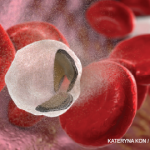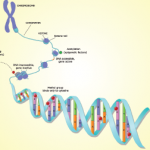That may have reassured some and angered others. However, I thought that I detected a subtle subtext. Several of the patients I met presented with engaging clinical issues that raised some interesting questions about the interplay between genes and environmental stresses. I thought I would share a few of their stories with you.
John: The Iron Man
As we acquire more knowledge, things do not become more comprehensible, but more mysterious.
—Albert Schweitzer
John, a middle-aged retired banker, drove to Boston from his home in coastal Rhode Island. A few years earlier, one of his severely damaged knees had been replaced at another Boston hospital. Decades earlier, John had been a college athlete; his squat body shape belied an impressive tennis career. Though his knee pain resolved after surgery, he noticed worsening joint pain elsewhere. He could no longer grip his tennis racket. His feet ached when he walked. At the age of 55, he reluctantly took an early retirement from his job.
At first, I thought there was not much else that I could offer John for the management of his severe, generalized osteoarthritis. Facing John, I was reminded of the Osler quip about running out the back door when the patient with arthritis comes through the front door. (With all of 65 square feet of office space and one door, I have nowhere to run!) But when I studied John’s hands, I realized that the degree of soft-tissue swelling and bony enlargement present around his metacarpal–phalangeal joints was inconsistent with his previous diagnoses of rheumatoid arthritis (RA) or primary osteoarthritis. A couple of X-rays and a few blood tests later, a new opinion emerged: hemochromatosis.
What a cool diagnosis for a rheumatologist to make! Unlike the internist who diagnoses hemochromatosis based on the results of a screening serum iron test in an asymptomatic patient (sheer luck) or the endocrinologist who suspects it to be present in someone with “bronze diabetes” (that’s pretty late in the game), with a minimum of clues, we can identify those afflicted relatively early in their disease.
A puffy knuckle, an errant teardrop-shaped osteophyte, some calcified cartilage. These are all the clues we need to make the diagnosis. Although it may be too late to repair the already-damaged joints, we can forestall further articular devastation and prevent major organ damage while alerting family members about the errant gene that may be lurking in their midst. John’s serum ferritin level of 2,700 left little doubt about the diagnosis. Genetic testing confirmed that he was homozygous for the most common gene causing hemochromatosis, the HFE variant.



